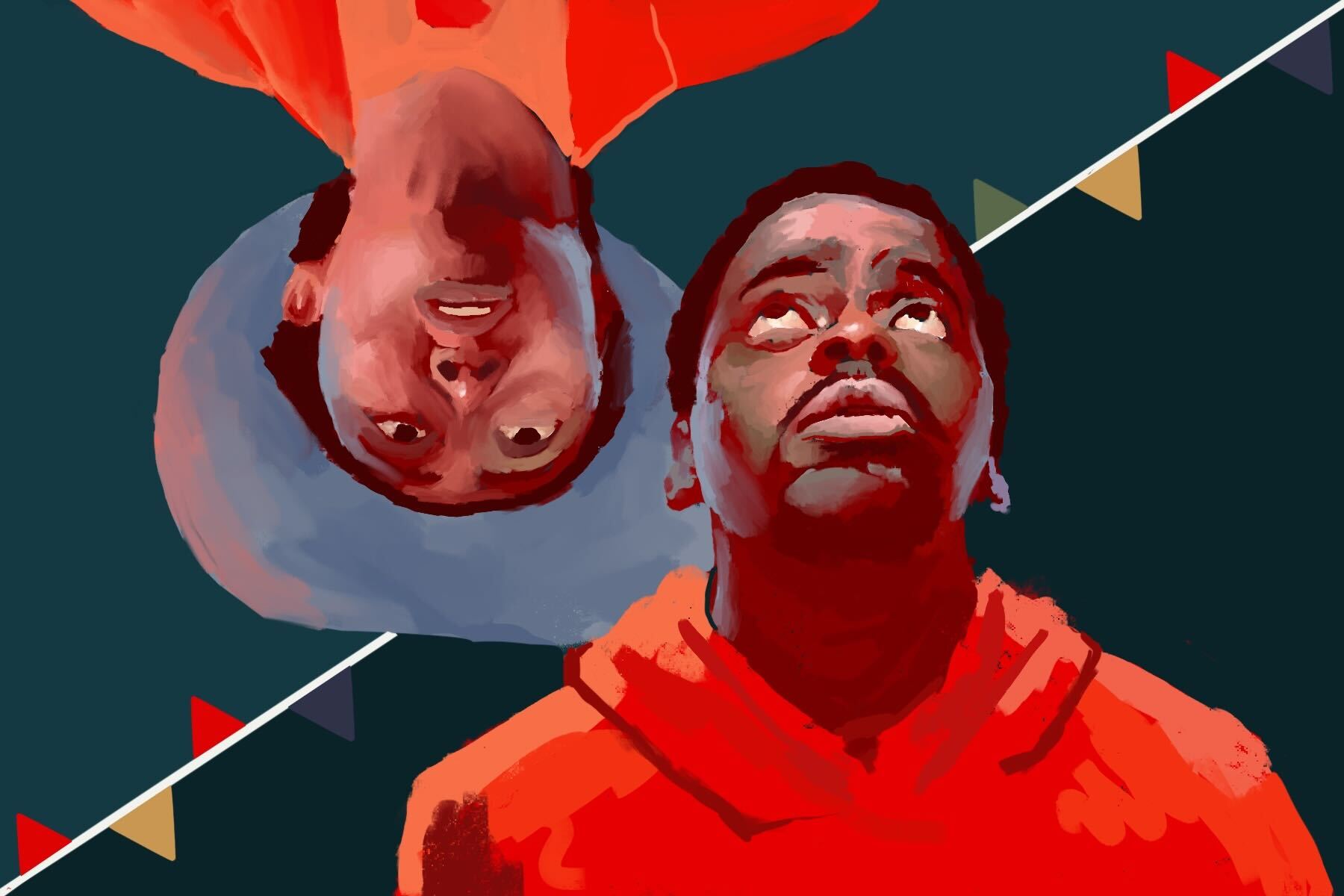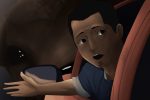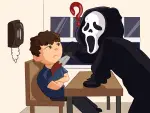Jordan Peele’s third feature film, “Nope” (2022), is an outstanding “yep.” The film follows the Haywood family, who own Haywood’s Hollywood Horses, a ranch that has trained horses for the entertainment industry for generations. Alongside this narrative is the story of a child star turned amusement park owner who has his own place in a terrifying moment of television history. Both plots explore the cynical and often overdone culture of sitcoms, aliens, UFOs and Hollywood itself with a remarkably fresh lens.
The movie’s depiction and reinvention of UFOs by itself reinvigorates a familiar concept with charming flair. Peele takes a flying saucer — something universally understood as a ship with alien life — and subverts expectations by making the UFO itself the extraterrestrial being. The film’s subversion of the classic depiction of alien life is beyond clever, but the movie does have a few shortcomings: Although “Nope” attempts to bridge the gap between its two major plots, like their respective roots in film and television, they don’t mix but compete for attention.
As if it was written in the — immovable and totally UFO-infested — clouds, this movie is two movies in one. The side plot exploring “Gordy’s Home!,” the early sitcom that featured the aforementioned child star, entirely outshines the main plot that revolves around the charming Haywood ranch. The film opens moments before a massacre on the set of “Gordy’s Home!” at the hands of its belligerent star, Gordy the chimpanzee. Throughout the film, viewers revisit the memory of young child star Ricky “Jupe” Park (Steven Yeun), whose recollection and frank obsession with that fateful day is unnerving. The film revisits the deadly and mysterious scene throughout its duration, and it leads to Park’s death, caused in part by his complex fascination with the trailing UFO.
It’s clear that his infatuation with the UFO is connected to his deeply traumatic and misguided obsession with former costar Gordy. The memory of the massacre has transfixed him; his disposition toward animals is now completely different. Now, he buys expensive horses from his neighbors at the Haywood ranch simply to feed a suspected UFO. He does not have a firm grasp on reality, which all stems from his fateful interactions with Gordy all those years ago.
This character exploration is tremendous and deeply insightful, but like Park’s journey, it’s also misguided. This particular plot’s climax — Park’s commercialization of the UFO sighting that transforms into a massive sacrifice of a crowd of people — makes no sense. Quite obviously, Peele’s filmmaking style enables the viewer to come to their own conclusions, but this doesn’t excuse the fact that his apparent trailing of the UFO was frankly entirely unexplored. The ensuing death of the crowd of people, Park’s wife and himself merely serves as a warning to the Haywoods. This not only stops any further exploration of Park’s character, but means Steven Yeun’s incredible performance leaves the stage far too early.
It’s more than clear that Yeun’s arc deserved its own film. His obsession with the UFO is warranted but not fully realized. It doesn’t seem as though he needed to be in a film involving aliens at all, especially considering that it’s not at all connected to the mystery of Gordy’s rage. Viewers know that the horses react to certain characteristics of the UFO; perhaps this is connected to Gordy, but his level of rage doesn’t seem entirely parallel to other animalistic behaviors. Park’s character never belonged in an extraterrestrial film, but rather, in a film that explores Hollywood and animals even further.
Daniel Kaluuya and Keke Palmer’s OJ and Emerald Haywood didn’t need such a strong assist, especially since the Gordy scenes are the most horrific elements of the film — scenes that don’t include the Haywoods in any way. However, the commentary on the pursuit of financial gain is entirely muddled. It is assumed that the crowd of people were swallowed and obliterated by the UFO as if it was somehow aware that there was an attempt to control it. The Haywoods are not meant to be shallowly money-hungry like Park, yet they attempt to document the UFO for financial gain. The film portrays the Haywoods as heroes, and Park as an obsessed villain. While, yes Park is irresponsible, are his aims any less innocent than the Haywoods?
The need to explore both of these plots in the same film doesn’t seem to justify itself; while the film progresses it could be assumed they might intersect in a satisfying way — but nope, they never do. Park’s character dies along with the crowd of people, and his amusement park is used for the final showdown. His character could have easily been a vindictive amusement park neighbor, and the remarkable horror elements behind the “Gordy’s Home!” production could have been explored in its own film entirely.
While Park’s story carried far more interest, its messier elements proved problematic. At the final showdown and attempted sacrifice of another horse to the UFO, it is revealed that Park’s former co-star and Gordy’s victim Mary Jo Elliott is still alive. Not only is she alive, but is in attendance without any dialogue — only eerie shots showcasing her current state. First of all, how is she alive? Why is she even at this event? It’s not remarkably clear why she is in attendance, and why her veil is blown off her face in every shot she’s in. This is a horror movie, and the film uses her disfigured state as an element of horror. The use of people who are disfigured or otherwise have stereotypically unsettling appearances is a well-worn trope in the horror genre — Jason Vorhees, Michael Myers, Freddy Krueger, Leatherface, the Joker and Frankenstein are among the many examples.
The reason behind the trope demonstrates that it is not only offensive but always unnecessary. Mary Jo Elliott didn’t have any lines, and there was no reason for her to be there other than to be a visual gag. Frankly, the shock of her being alive could take one out of the film, and it might have made a bigger impact on the terrifying sequence if she had not survived the attack. Worst of all, an early reaction to Mary Jo Elliott’s face was shown without context in the film’s trailer. This might be even more irresponsible than her appearance in the full scene, as without context, many viewers confused about the film’s plot began to question whether this individual was even alive — some speculated that corpses might be an element in the film.
While the reaction is understandable, it demonstrates the need for responsibility in trailers and media as a whole. Because Elliott’s injuries may have been achieved with prosthetics, no aliens were involved. According to research done in 2019 by Utah State University researchers, “Over 47,000 people annually in the United States sought medical attention after being attacked or bitten by wildlife, and approximately 8 people died annually.” Elliott’s injuries weren’t done by an extraterrestrial but by something in real life, and marketing her appearance as an element of horror is offensive. While this isn’t a new aspect of horror storytelling, it didn’t have to continue with “Nope.”
“Nope” is refreshing and truly next level, but it isn’t just one film, but two. It is a strong and well-conceived film, but it does too much. In my opinion, the film could have worked better as two separate interesting films that explored each of its concepts and star’s performances even further. While Park’s side plot with Gordy is fascinating, it was cut far too short and ultimately ends without achieving its full potential. The main plot following the Haywoods’ troubles with the extraterrestrials is a fresh and truly horrific delight, but it’s a crime for any film to be outdone by its side plot — the most terrifying parts of the film are Gordy’s scenes, and the payoff never feels truly connected to the main story of the film.
















